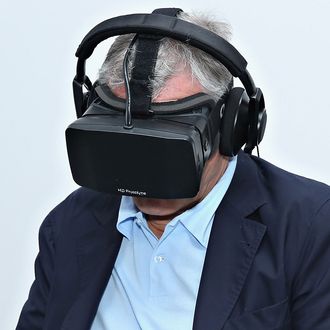
Pain is tricky. At its most basic level, it’s our body’s way of alerting us to possible danger to our well-being, but all sorts of sensory and psychological cues can make pain feel more or less intense. It’s a prime example of how complicated the mind-body connection can be, and people who suffer from chronic pain — that is, folks for whom the pain is not providing any useful information — are constantly searching for ways to relieve it.
In a new paper in Psychological Science, researchers took advantage of some of this mind-body weirdness to point to a surprising potential way to reduce chronic pain. To do so, they employed the use of hardware, but hardware usually associated with video games than medicine: the Oculus Rift headset.
For the study, a team led by Daniel S. Harvie of the University of South Australia found 12 people who suffer from chronic neck pain and brought them into the lab. There, they all sat in a supportive chair, put on a “seatbelt” to restrict their motion, and donned Oculus Rift headsets and headphones designed to cancel out outside noises. They were presented with various virtual scenes — a countryside, a dining room, and some others — and were instructed to turn their heads to the left or right up until the point where pain kicked in.
Here’s where the researchers engaged in some trickery: Sometimes, the headset’s point of view accurately reflected the neck motion of the wearer. But other times, it was exaggerated or diminished by 20 percent — so for a participant in an exaggeration trial, they might rotate their head 10 degrees, but their point of view would shift 12 degrees. (There was a lot of random-ordering between the three conditions to make sure the study participants wouldn’t catch on.)
The illusion seemed to work. As compared to the baseline, in which the perception of a participant’s head motion matched the reality, those whose perception of motion was exaggerated had a 7 percent lower range of pain-free motion; those whose perception of their head’s motion was artificially reduced, on the other hand, had a range of pain-free motion that increased by 6 percent.
Even though the results here are pretty impressive, 12 subjects make for a very small study, so one can’t draw firm conclusions. But it’s definitely worthy of follow-up research, and is a fascinating example of the surprising ways our bodies decide how much pain to send our way. It’s almost as though some part of the participant’s brains were reacting to the expectation of pain. I wouldn’t expect virtual-reality-based anti-pain regimens anytime soon, but it will be very interesting to see what happens as researchers continue to mix modern technology with modern understandings of pain.




